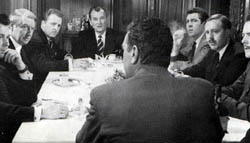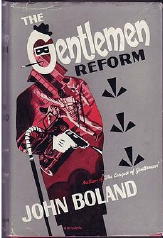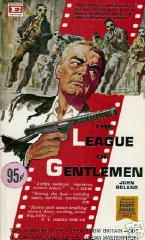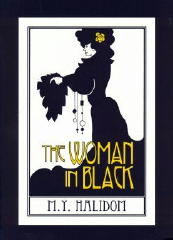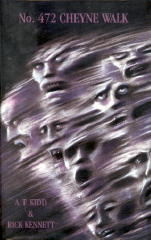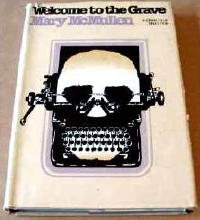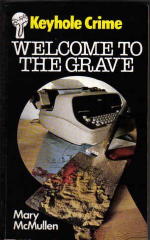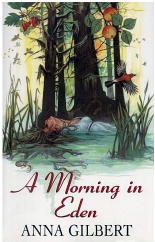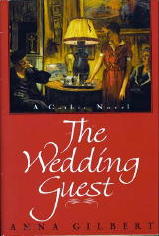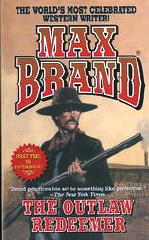RICHARD ELLINGTON – It’s a Crime. Pocket 756; 1st printing, Dec 1950. Hardcover: William Morrow, 1948.
Richard Ellington (1914-1980) wrote only five mysteries, and all five featured a Manhattan-based private eye named Steve Drake. This is the second of them, and for the record, using Al Hubin’s Revised Crime Fiction IV as a basis, here’s a list of all five, along with (eventually) paperback covers for all of them:
Shoot the Works. Morrow, 1948; Pocket #624, 1949.
It’s a Crime. Morrow, 1948; Pocket #756, 1950.
Stone Cold Dead. Morrow, 1950; Pocket #813, 1951.
Exit for a Dame. Morrow, 1951; Pocket #941, 1953.
Just Killing Time. Morrow, 1953; Bantam #1286 as Shakedown, 1955.
Thanks to the Cook-Miller index to digest mystery magazines, we learn that Ellington also published three short stories in Manhunt and one in Mike Shayne Mystery Magazine:
“Fan Club” Manhunt, April 1953.
“The Ripper” Manhunt, August 1953 .
“Shadow Boxer” Manhunt, February 1954.
“‘Good-By, Cora'” Mike Shayne, February 1968
At least the first of these is a Steve Drake yarn as well. I’m not sure about any of the others. According to the brief biography of Ellington inside the front cover of this paperback edition, he was heavily involved with radio both before and after the war: acting, announcing and writing. What he ended up doing after the career in writing mysteries ended I don’t yet know; perhaps writing for television? (A later search on www.imdb.com turned up nothing.)
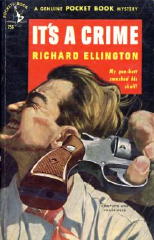
The cover of the paperback edition of It’s a Crime will give you an idea of the kind of mystery it is, or if not, at least it’s a portrayal of the one scene that the people at Pocket thought might sell the book. Paul Kresse is the artist, and in the center foreground is the butt end of a gun being grasped by the barrel (only part of the fingers showing) and being used to clout a man in the head. Side view, tie askew, he’s obviously in excruciating pain.
Quoted from the text: “My gun-butt smashed his skull.”
Granted that the scene is in the book, and so is another in close proximity of the same guy with a tommy gun, firing away at Drake before he gets away, only to turn the tables, as shown on the cover, but …
Steve Drake is really only medium-boiled, about 6 or 7 on a standard HB (hard-boiled) scale ranging from 1 to 10. I’ll quote Mr. Drake, who tells his own story, from pages 60-61:
“She was dead, of course. Just the limp position of the arm hanging over the tub told me that. Don’t let anyone kid you. It’s only in very rare cases that you have to listen for heartbeats and feel pulses. They look dead, they don’t look the way they did before. If you don’t believe me, go to the morgue, go to a funeral, go join the police force, wait for the next draft … What the hell am I talking about? Okay, it scared me. It made me jittery. It always does. It would you, too. You might throw up. You might even faint. I didn’t. But then I’m a tough guy.”
Drake actually has two cases in this adventure. The first is a wandering husband caper. The second is a case of blackmail, the victim being the male half of a famous Broadway husband-and-wife duo. That the two cases are connected comes as no surprise to anyone who has read as many mysteries as you and I, but Drake himself takes it in with a slightly perplexed stride.
What is surprising, and it really shouldn’t have been, is that this prime example of lower-echelon tough-guy fiction turns out to have a complex and finely tuned detective story plot to go with it. There are many, many people with access to the dead girl’s apartment, and before her death there were enough of them going in and out that it would take a minute-by-minute timetable to keep it all clear.
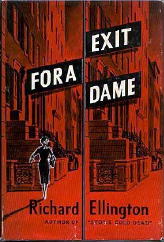
After the non-essentials have been eliminated, all of the suspects that remain have iron-clad alibis, and takes a huge effort in deduction on Steve Drake’s art to crack one of them. It’s a plot worthy of Ellery Queen, say, without quite the same finesse — relying on what seems like sheer chance on the part of the killer, and of course the aforementioned coincidence that involves Drake in both cases to begin with.
It’s a neat double combo, in other words, and very much worth seeking out. I’d especially like to locate my copy of the next book in the series. The love affair that Drake seems to find himself in as this one goes along seems to bloom very quickly, and if I read the last couple of pages correctly, Drake proposes marriage and the same time he says he going to be spending the money he made on this case on a trip to St. Thomas. Does she go too, or will she wait for him patiently at home?
These are things an inquiring minds like to know.
— December 2003
[UPDATE] 06-28-08. Prompting my posting this review from the past was an email this morning from SF writer Robert Silverberg:
“Something led me to your web site this morning and an old entry about the forgotten mystery writer Richard Ellington. You ask what he did when he stopped writing mysteries.
“What he did was open a hotel in the Caribbean — perhaps on St. Thomas. (I don’t remember which island, really — it was a long time ago.) I visited it somewhere in the early 1960s and spent a pleasant afternoon exchanging shop talk with him, he talking about mysteries and me about science fiction. As I say, a long time ago, and I have no other details to offer.”
Then from a follow-up email:
“A little googling reveals that he was a delegate to the 1964 Republican convention, representing St. John in the Virgin Islands. Since I visited St. John in that era, that must have been where his hotel was.”

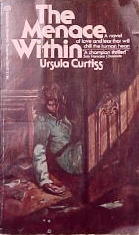
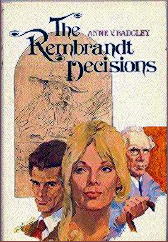

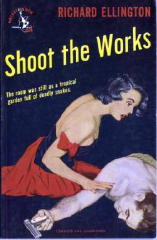
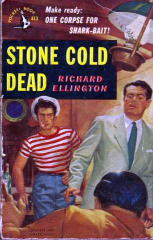
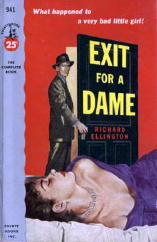
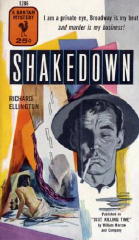
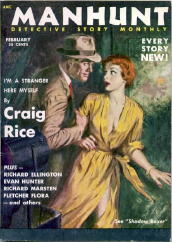


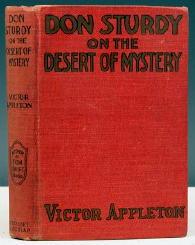

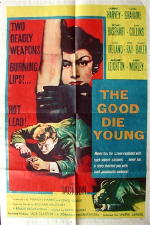


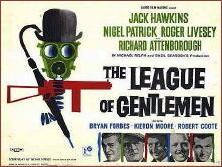 THE LEAGUE OF GENTLEMEN. Allied Film Makers / J. Arthur Rank. 1960. Jack Hawkins, Nigel Patrick, Roger Livesey, Richard Attenborough, Bryan Forbes, Kieron Moore, Terence Alexander, Norman Bird, with Robert Coote, Nanette Newman & Oliver Reed (the latter uncredited). Screenplay: Brian Forbes; based on the novel of the same name by John Boland. Director: Basil Dearden.
THE LEAGUE OF GENTLEMEN. Allied Film Makers / J. Arthur Rank. 1960. Jack Hawkins, Nigel Patrick, Roger Livesey, Richard Attenborough, Bryan Forbes, Kieron Moore, Terence Alexander, Norman Bird, with Robert Coote, Nanette Newman & Oliver Reed (the latter uncredited). Screenplay: Brian Forbes; based on the novel of the same name by John Boland. Director: Basil Dearden.
